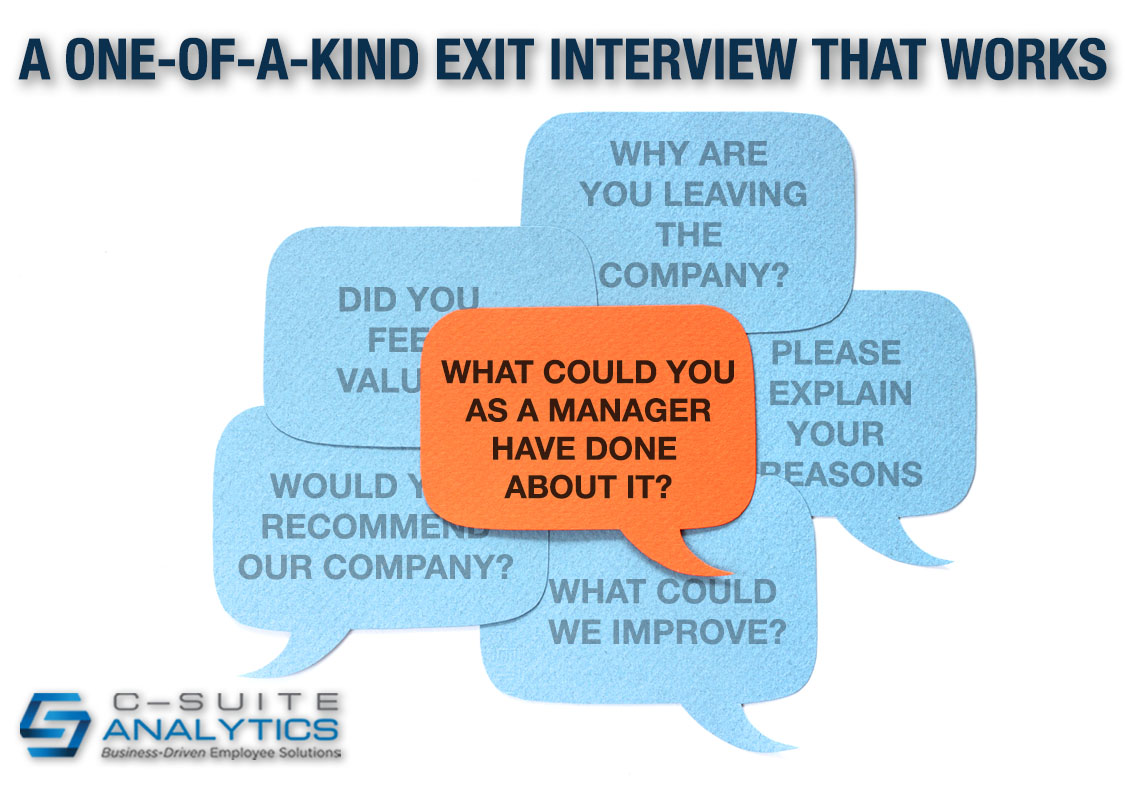AI, deportations, tariffs, and birthrate declines are reshaping America's workforce—blue- and white-collar alike. From baby boomer exits to AI disruptions, breaking down the workforce challenges no leader can afford to ignore.
A One-Of-A-Kind Exit Interview That Works

I wrote here a few weeks ago that exit interviews were the same as toe tags, that whereas autopsies tell reasons why an event happened that exit interviews don’t give us a reason why because of many reasons…including employees don’t tell the truth.
But here is one good exit interview idea. Years ago, I was speaking to an executive group in Chicago when a man in the back of the room raised his hand and said he had a way to cut turnover that I hadn’t mentioned. He then went on to say this:
I’m CEO of a 400-employee consulting company. Whenever someone quits, I won’t sign off on the replacement requisition until I interview the manager to learn why that employee really quit and what that manager could have done about it.
Brilliant. I was stunned not just by his great idea but that a CEO of such a large firm cared so much about turnover that he invested so much time to fix it. Compare his approach to the high number of CEOs who see turnover like rush-hour traffic, one of those bad things that we can’t solve, that we have to work around. Or their solution to turnover is “HR, go fix it”.
Given our company’s reputation that we cut turnover 30% and more, we have now developed this idea into one of our many turnover solutions…and recommend to client leaders on all levels that when an employee leaves that the manager two levels above conduct an “exit interview” with the leaving employee’s direct supervisor. Here are five questions that manager should ask:
- As best you know, why is this employee leaving us?
- Were you aware of this employee’s potential to leave for this reason?
- How was this employee’s overall job performance?
- What lessons can you learn from this employee’s leaving?
- What changes could you make to your own management style in order to retain others?
Our client company leaders have one other chunk of data they can use to learn even more. After they conduct their first Stay Interview with each employee, those leaders and each of their subordinate supervisors forecast how long each employee will stay…and they are accountable for changing that forecast as often as needed based on new information they might learn about each individual employee. So our client company leaders know whether their supervisors anticipated each exit or were caught by surprise.
Think about the power of that one idea, that leaders forecast how long each employee will stay. If a leader loses ten employees and forecasted eight were likely to leave…for any reason…then we can conclude that leader was likely in close touch with her team and that her team trusted her by being open. But if another leader lost ten employees and forecasted eight of them would stay, that leader is likely out of touch…and is a large retention risk.
The greater lesson here is employee turnover is NOT like rush-hour traffic, something we have to live with. It’s not the cost of doing business, not something we are stuck with and cannot change.
As I tap on my keyboard today, more employees are quitting their jobs than at any time in our nation’s history.[i] At no time ever have we confronted a workforce that cannot fill the jobs we have while at the same time quitting the jobs they are in. But it is what it is. And it doesn’t have to be.
[i] According to our Bureau of Labor Statistics data, the second quarter of 2021 quits will exceed those of the highest previous quarter which as the first quarter of 2021.



